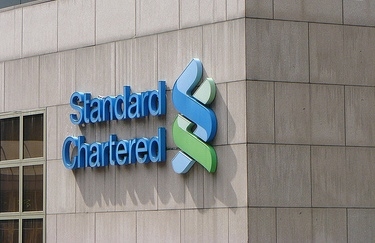
Check out how Standard Chartered met Chinese regulatory requirements
Find out how the bank hosted all Chinese customer data on the mainland.
When Standard Chartered Bank set up a new branch office in China, compliance regulations meant that it had to host customer data in China. The problem was that the system was hosted on an expensive mainframe environment.
Here's more from the case study on Standard Chartered Bank China:
Opportunities present challenges
The Chinese market is an important one for growing businesses and Standard Chartered Bank took the decision to set up a new branch office in China. One of the bank’s core applications, its Retail Loan System (RLS), resided on a mainframe in Hong Kong.
However compliance with Chinese government regulations required the bank to host all Chinese customer data on the mainland. This substantial undertaking had to be completed within a very short timeframe to meet the targets of the Chinese regulatory body.
An innovative solution
Rather than incur the expense and inconvenience of replicating a new mainframe environment in China, Standard Chartered looked for a solution that would enable it to deploy the application on a lower cost platform than the mainframe.
This was a significant undertaking and involved moving over 3,000 COBOL programs and 800 screens from the IBM mainframe onto Linux. The bank found the answer in technology from Micro Focus designed to migrate applications from the mainframe onto alternative platforms with minimal change.
“The selection of Micro Focus tools and technology was central to the success of the project,” explains Ramesh Narayanaswamy, Head of Retail Technology Solutions Delivery at Standard Chartered Bank.
“It meant we could make the platform change without having to make major changes to the application source code and design, and only minimal change to existing programs.”
Drawing on Micro Focus experience to overcome multiple challenges
The project was the first implementation of its kind for the bank, and there was no expertise or technical knowledge within the bank to draw on. As Project Manager for the Retail Solutions Delivery at Standard Chartered Bank, Ananth Gopal explains that the project presented a number of challenges.
“Initially we thought it could be plug and play, but parts of system were old legacy COBOL and there were a lot of COBOL statements that had to be reengineered.” Finding people with the right skills presented further challenges.
As Gopal says, “We had a group of people with mainframe expertise, and a separate group of people who know the Linux world. Finding people with a crossover skillset was impossible and we faced a steep learning curve to acquire these skills ourselves. The Micro Focus solutions architect allocated to our project was invaluable in helping us speed up the process.”
Ensuring that security standards were retained was a further consideration as the mainframe security had to be emulated on the new platform. Micro Focus’ extensive experience of more than 500 successful migrations proved invaluable to the Standard Chartered Bank team and helped it overcome the challenges within an impressive five month timeframe from proof of concept to go-live.
Minimizing change presents a low-risk strategy
The decision to migrate the application and adopt the Micro Focus approach proved a winning combination for Ramesh Narayanaswamy, who values the low-risk approach to the delivery.
“We retain the same COBOL, CICS and JCL that we had on the mainframe. This made the migration much easier and faster than any alternative solution.”
He continues, “In addition, we now benefit from better performance and an architecture that we can scale up quickly for relatively little cost, simply by adding more processors and storage as these become necessary.”
Impressive performance improvements – today and in the future
The project has returned performance improvements across the system. Batch performance is significantly faster as there are fewer countries sharing the resources.
“When we moved to the Micro Focus stand alone system from the shared environment it ran extremely quickly and in fact gave use greater processing capacity than on the mainframe,” explains Gopal.
“The new Intel-based Linux server also gave us an opportunity to reengineer some aspects of applications, which resulted in faster execution of batch jobs than on the mainframe.” Performance improvements were impressive. One overnight batch job ran three hours faster and one batch job that previously took three hours could now be run in three minutes.
The migration has also opened up new technology directions for Standard Chartered Bank. “Now we can integrate rapidly with other systems through exposing rehosted functionality as web services,” says Narayanaswamy.






















 Advertise
Advertise






